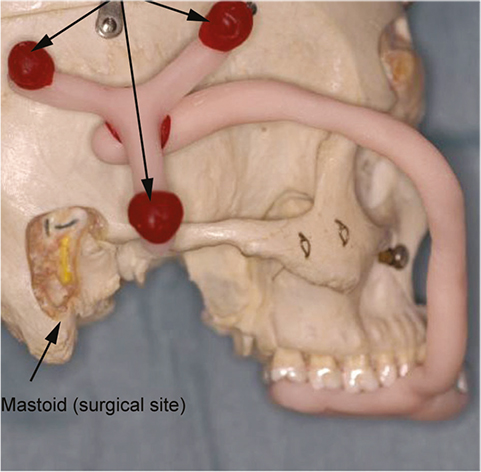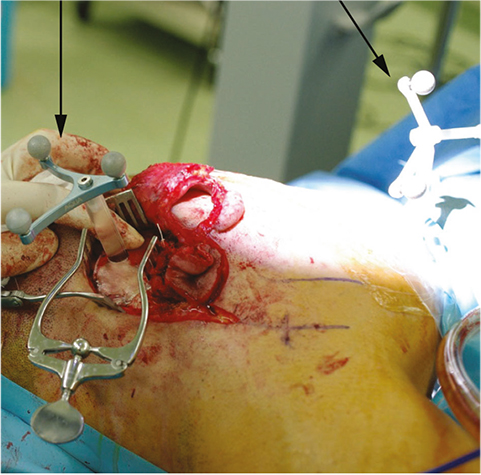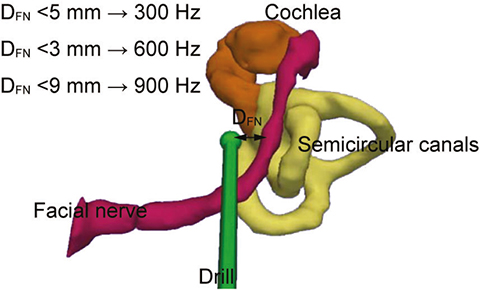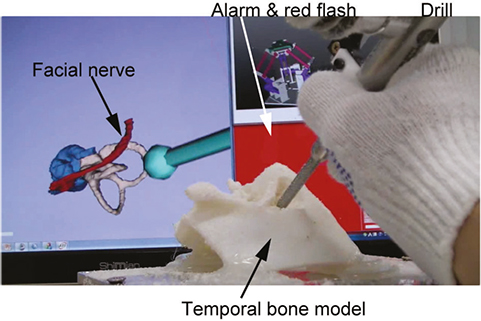Hanyang Med Rev.
2016 Nov;36(4):230-234. 10.7599/hmr.2016.36.4.230.
Role of computers and robots in future otological surgery
- Affiliations
-
- 1Department of Otorhinolaryngology, Graduate School of Medical Sciences, Kyushu University, Japan. matunozo@med.kyushu-u.ac.jp
- KMID: 2361197
- DOI: http://doi.org/10.7599/hmr.2016.36.4.230
Abstract
- The author herein reviews recent series of projects aimed at developing computer- and robot-assisted otological surgery. The author's team and its collaborating institutions have developed devices for image-guided surgery and robots for otological procedures. The accumulation of user-oriented research resulted in developing a unique robotic system of human-robot collaborative control, which is the system that restricts the surgeon's hand only if surrounding structures are in danger of injury. Thus, as many other fields in the surgery, otological procedures can also be assisted by computers and robots that provide objective and patient-specific anatomical information during surgery.
Keyword
MeSH Terms
Figure
Cited by 1 articles
-
Review of Computer-Aided Surgery
Byung-Ju Yi
Hanyang Med Rev. 2016;36(4):203-204. doi: 10.7599/hmr.2016.36.4.203.
Reference
-
1. Dalgorf DM, Sacks R, Wormald PJ, Naidoo Y, Panizza B, Uren B, et al. Image-guided surgery influences perioperative morbidity from endoscopic sinus surgery: a systematic review and meta-analysis. Otolaryngol Head Neck Surg. 2013; 149:17–29.
Article2. Tateya I, Shiotani A, Satou Y, Tomifuji M, Morita S, Muto M, et al. Transoral surgery for laryngo-pharyngeal cancer - The paradigm shift of the head and cancer treatment. Auris Nasus Larynx. 2016; 43:21–32.
Article3. Oka M, Cho B, Matsumoto N, Hong J, Jinnouchi M, Ouchida R, et al. A preregistered STAMP method for image-guided temporal bone surgery. Int J Comput Assist Radiol Surg. 2014; 9:119–126.
Article4. Grauvogel TD, Grauvogel J, Arndt S, Berlis A, Maier W. Is there an equivalence of non-invasive to invasive referenciation in computer-aided surgery? Eur Arch Otorhinolaryngol. 2012; 269:2285–2290.
Article5. Matsumoto N, Oka M, Cho B, Hong J, Jinnouchi M, Ouchida R, et al. Cochlear implantation assisted by noninvasive image guidance. Otol Neurotol. 2012; 33:1333–1338.
Article6. Matsumoto N, Hong J, Hashizume M, Komune S. A minimally invasive registration method using surface template-assisted marker positioning (STAMP) for image-guided otologic surgery. Otolaryngol Head Neck Surg. 2009; 140:96–102.
Article7. Cho B, Oka M, Matsumoto N, Ouchida R, Hong J, Hashizume M. Warning navigation system using real-time safe region monitoring for otologic surgery. Int J Comput Assist Radiol Surg. 2013; 8:395–405.
Article8. Liu WP, Azizian M, Sorger J, Taylor RH, Reilly BK, Cleary K, et al. Cadaveric feasibility study of da Vinci Si-assisted cochlear implant with augmented visual navigation for otologic surgery. JAMA Otolaryngol Head Neck Surg. 2014; 140:208–214.
Article9. Danilchenko A, Balachandran R, Toennies JL, Baron S, Munske B, Fitzpatrick JM, et al. Robotic mastoidectomy. Otol Neurotol. 2011; 32:11–16.
Article10. Bell B, Williamson T, Gerber N, Gavaghan K, Wimmer W, Kompis M, et al. An image-guided robot system for direct cochlear access. Cochlear Implants Int. 2014; 15:Suppl 1. S11–S13.
Article11. Lim H, Matsumoto N, Cho B, Hong J, Yamashita M, Hashizume M, et al. Semi-manual mastoidectomy assisted by human-robot collaborative control - A temporal bone replica study. Auris Nasus Larynx. 2016; 43:161–165.
Article





